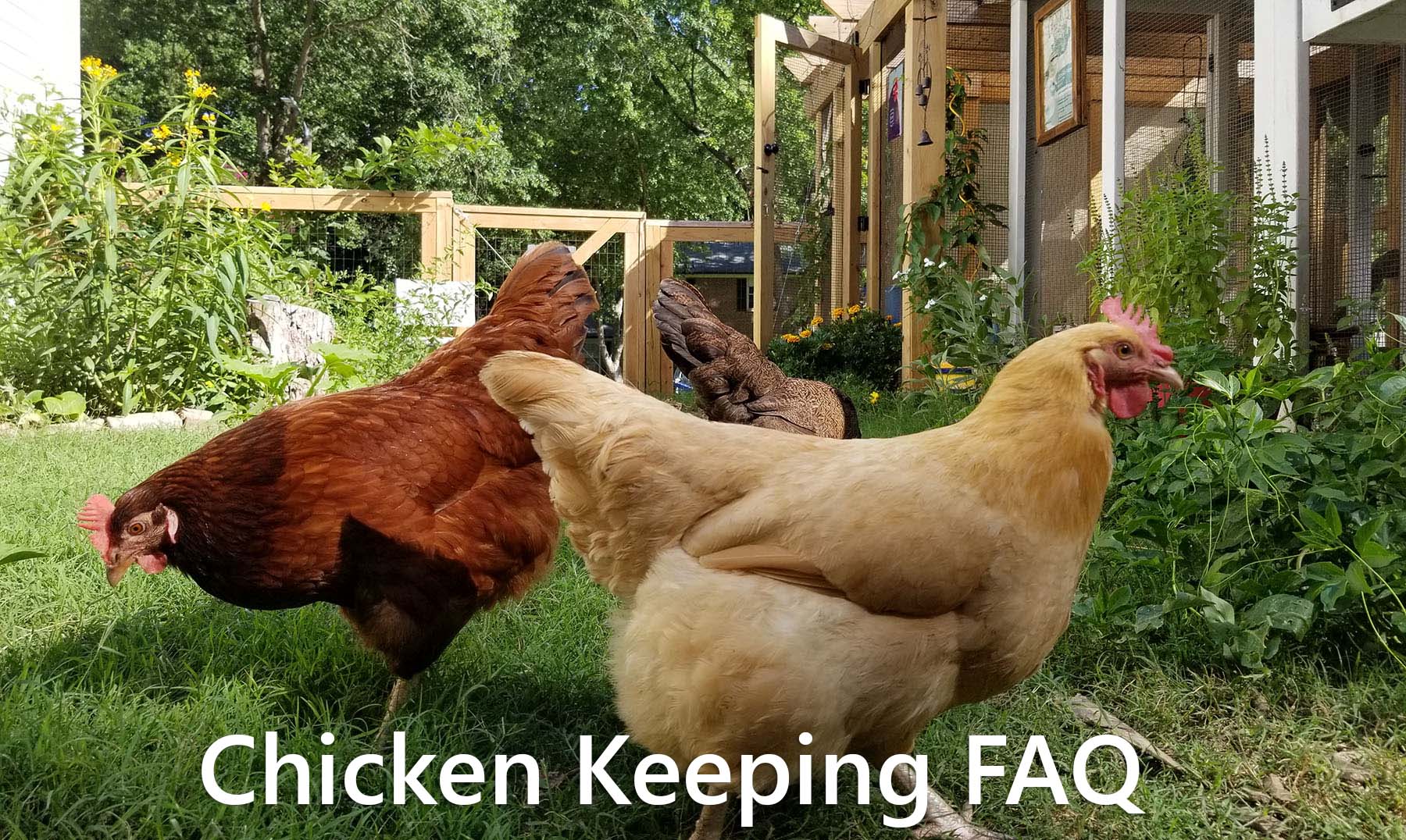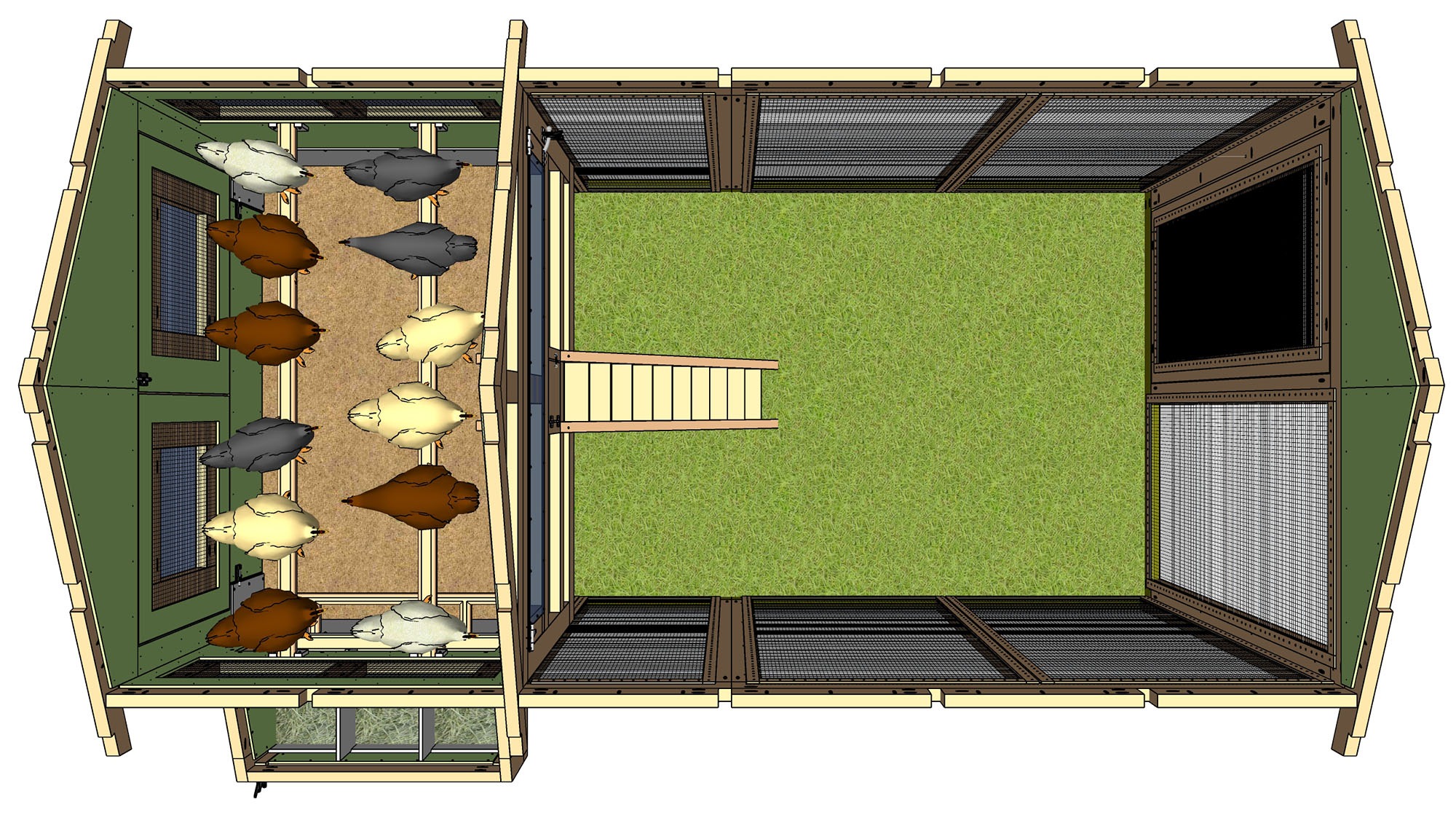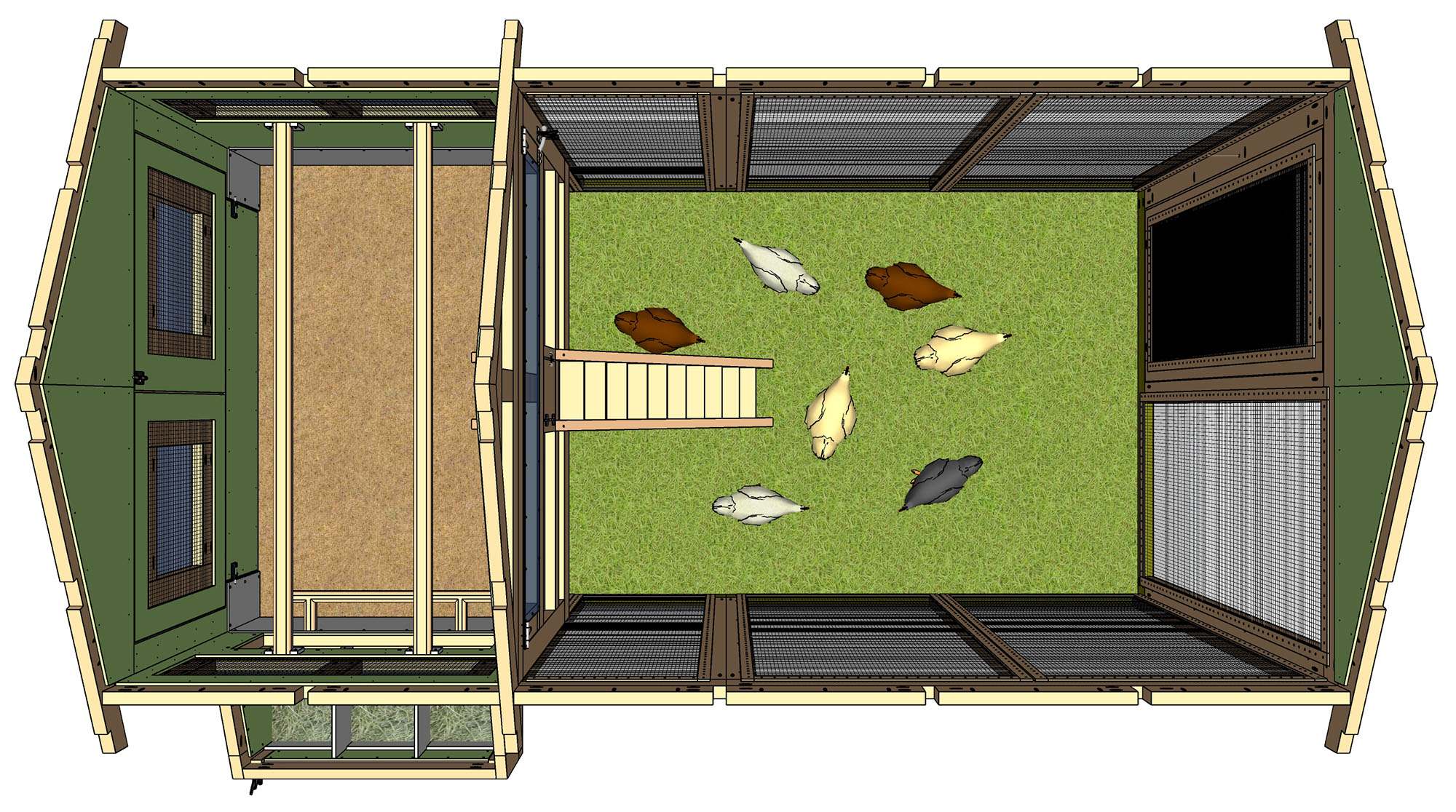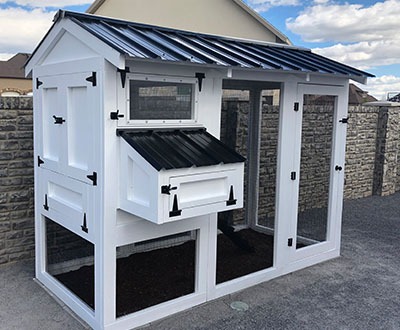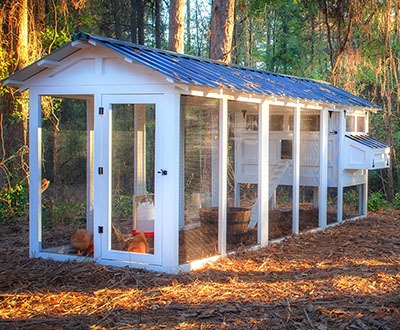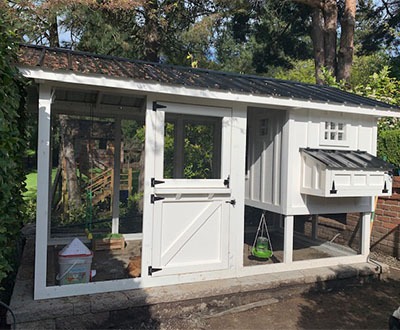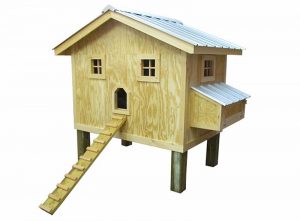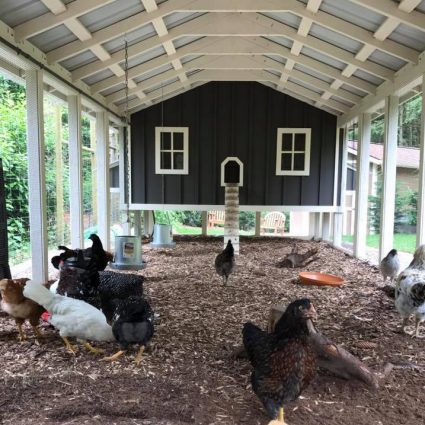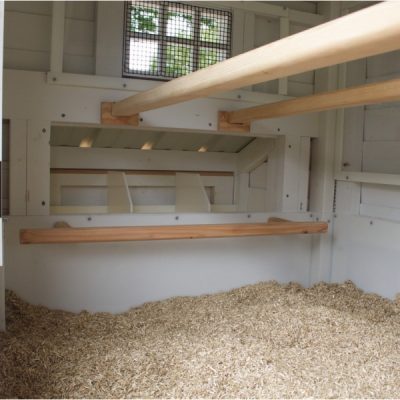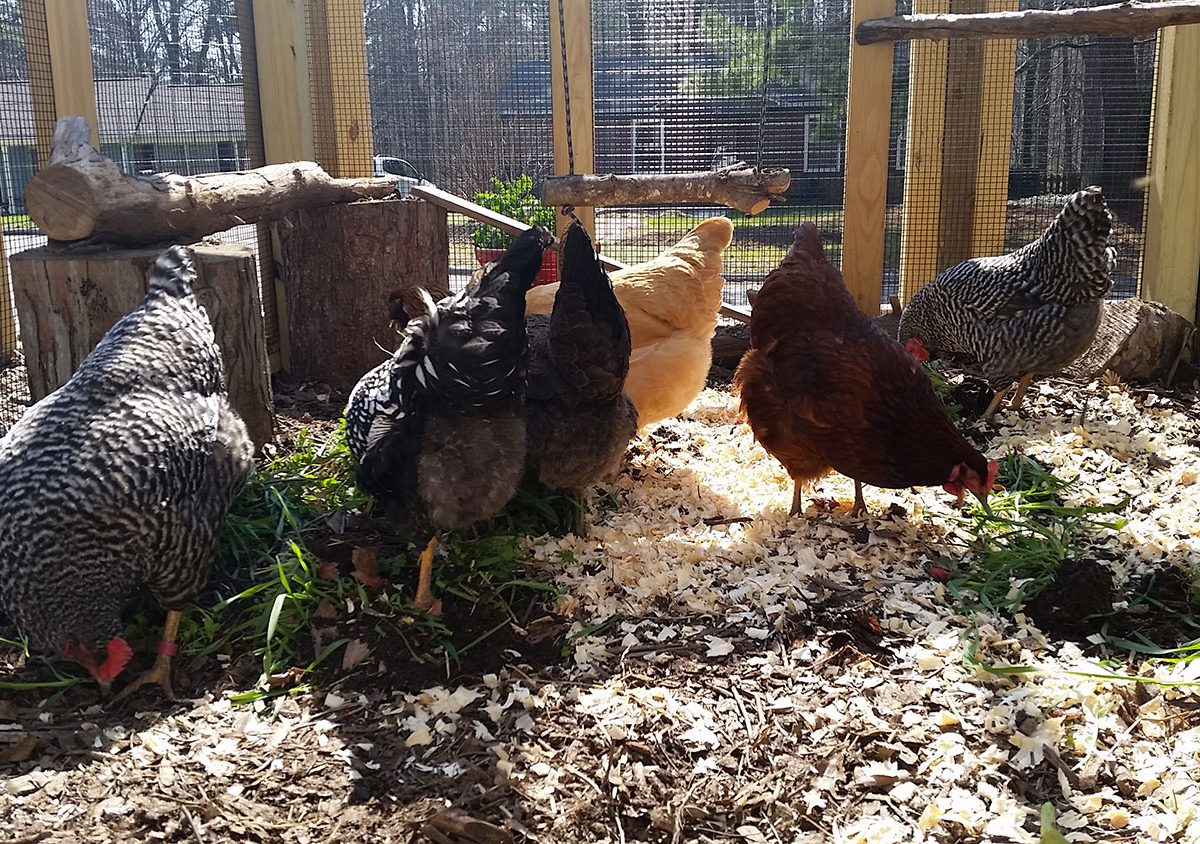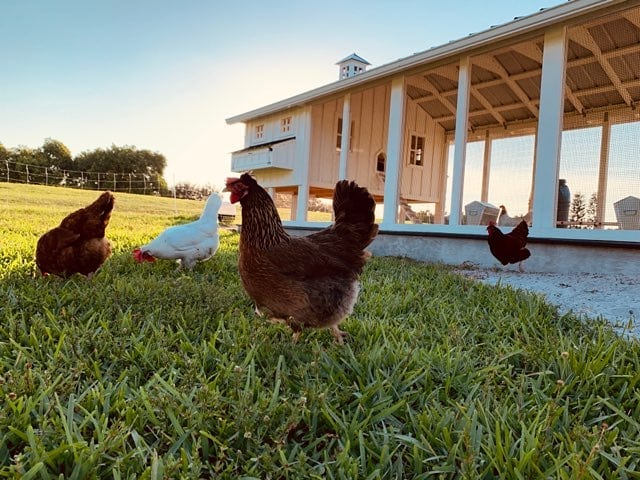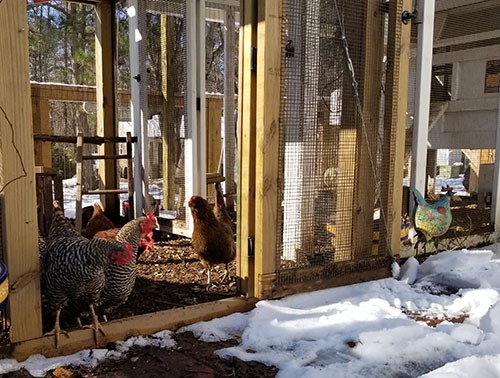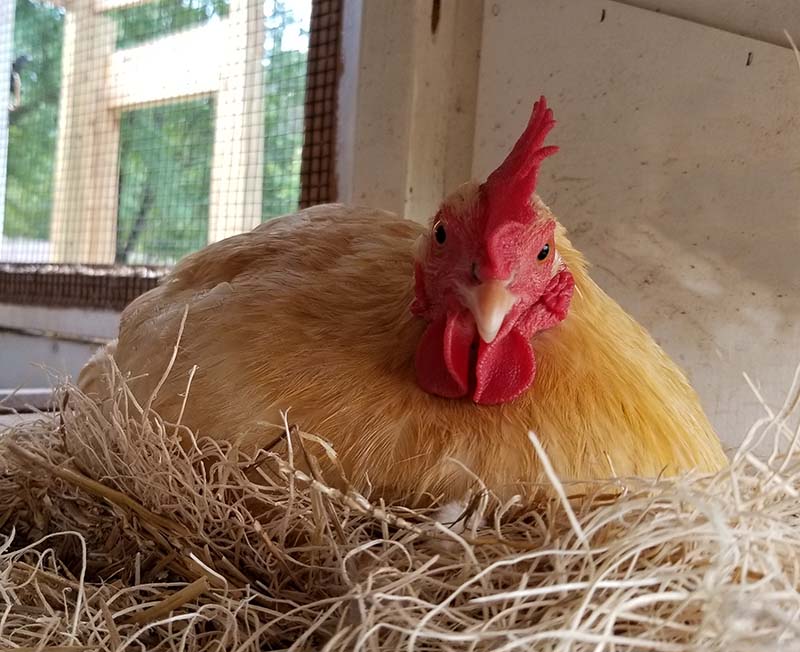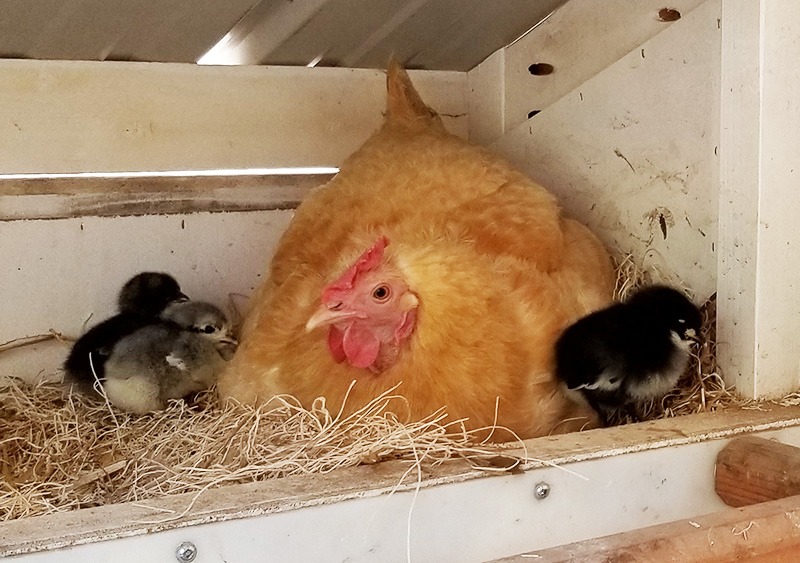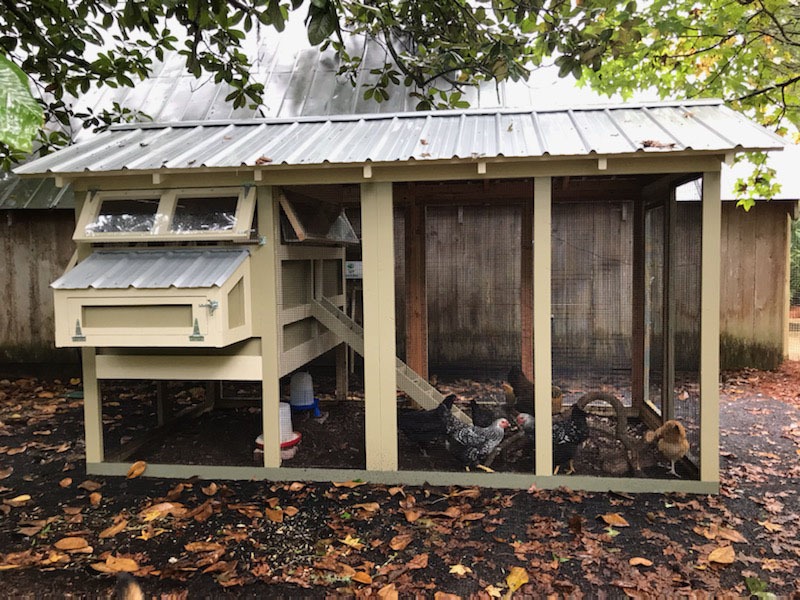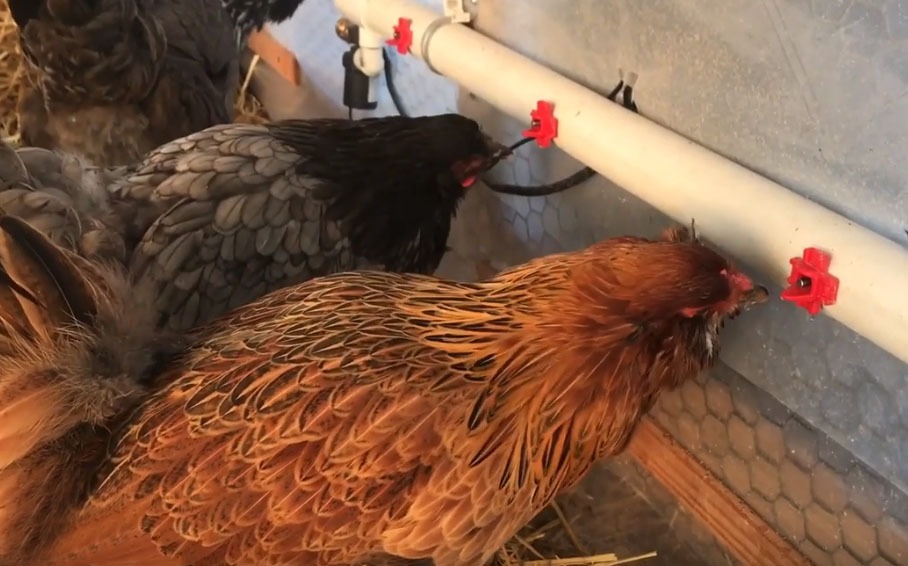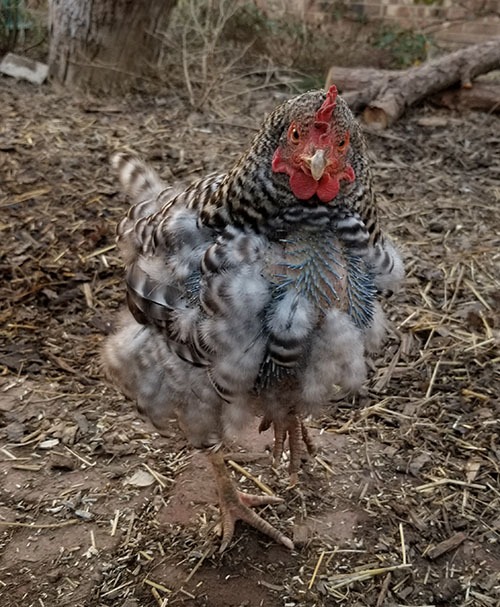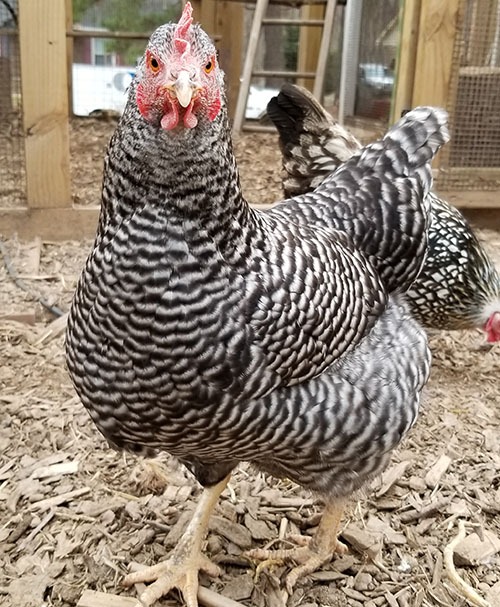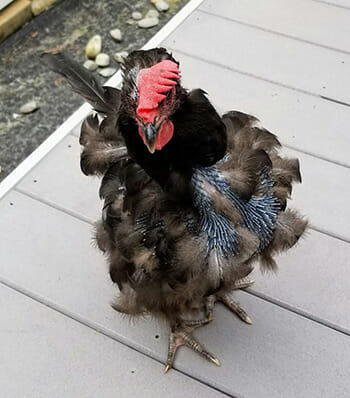What’s the difference between the Carolina Coop and the American Coop?
The standard Carolina Coop and the American Coop both have the same 12′ x 6′ footprint, with a 4′ x 6′ henhouse with two 6-foot roost bars. Both coops come with HDPE deep litter bed and HDPE lined nest box.
The Carolina Coop has polycarbonate windows has cantilevered windows with muntins, that gives it a traditional window look.
The windows on the American Coop are also polycarbonate and cantilevered. The same is with the henhouse door inserts.
The Carolina Coop comes standard with board and batten style siding. It has removable henhouse doors and the 2x4s are planed and trimmed. The coop has three layers: frame, henhouse wall, and trim.
This also allows for other coop options, such as clapboard or ship lap siding.
Both coops are built with premium Douglas fir lumber, have black coated 1/2″ hardware cloth, exterior black hardware, and metal roofing. Our Carolina and American Coops come in a variety of run and henhouse sizes, plus a bunch of other options.
What is the California Coop?
The California Coop is built like our American Coop only smaller.
With a 4′ x 9′ overall footprint, the California Coop (Cali Coop) is perfect for small flocks of about 4 full-sized hens or more if you have bantams.
Then henhouse is 3′ x 4′ and has one 4-foot roost bar and a two-gang egg hutch. The options for the California Coop are limited to zinc hardware, additional two-gang egg hutch, and additional 3′ run extensions.
Another difference with the California Coop is that we eliminated the henhouse screen doors. The back doors open and it has a drop down gate with our signature deep litter bed. There still is plenty of ventilation in this little coop!
The California Coop is a superior walk-in chicken coop that also is made from Douglas fir, has black hardware, .5-inch PVC coated black hardware cloth, pocket screws, and black or Galvalume metal roofing.
YOU CAN COMPARE OUR COOPS HERE ⇩






